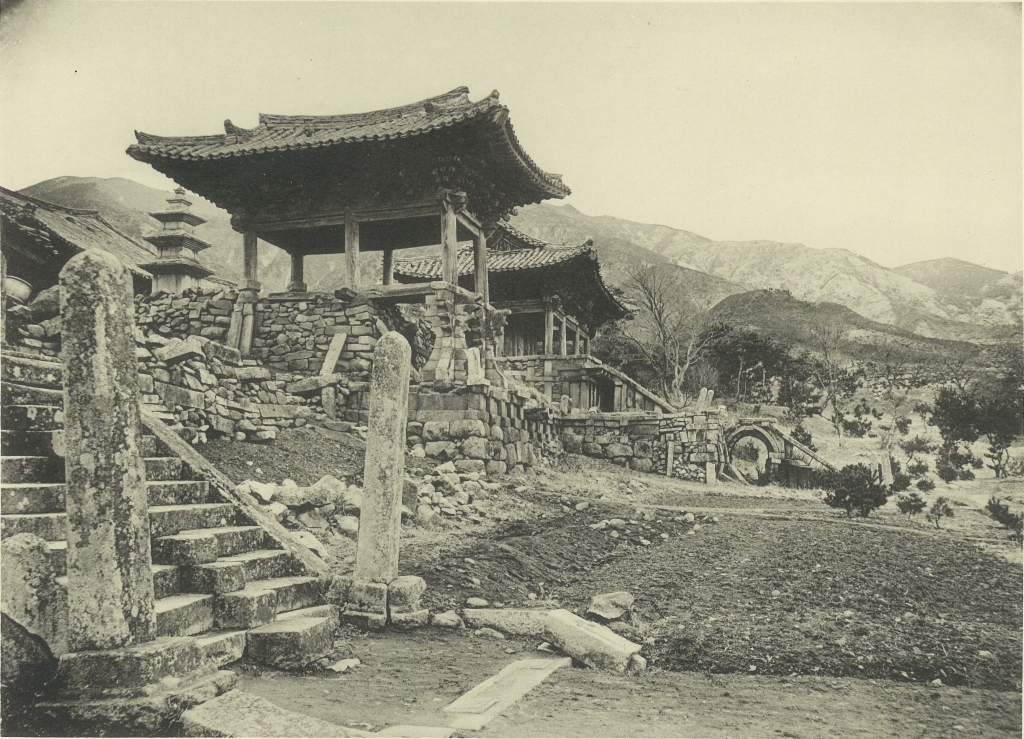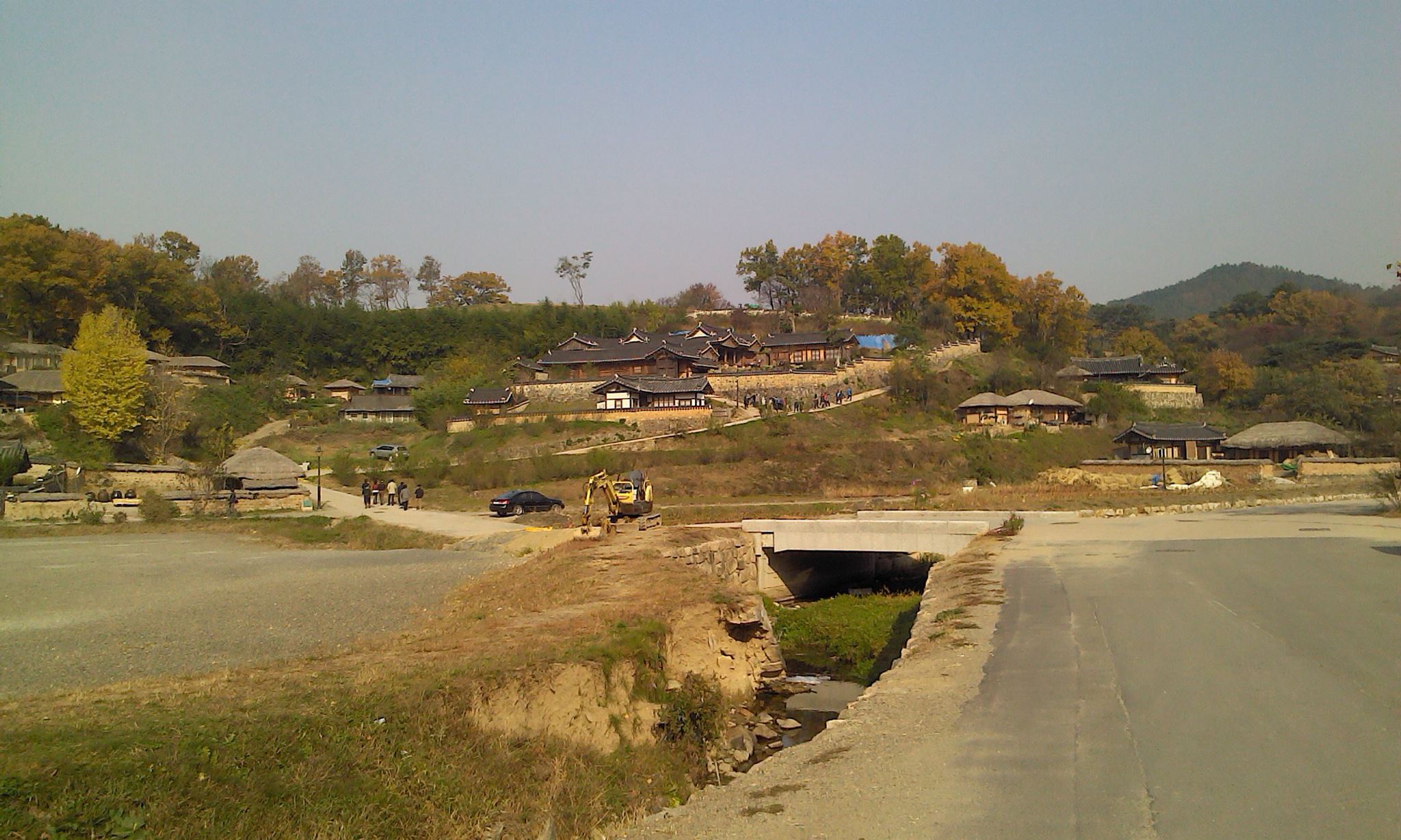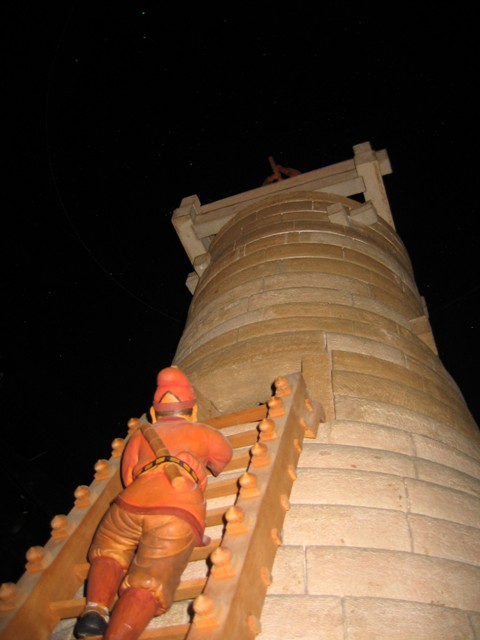|
Gyeongju
Gyeongju ( ko, 경주, ), historically known as ''Seorabeol'' ( ko, 서라벌, ), is a coastal city in the far southeastern corner of North Gyeongsang Province in South Korea. It is the second largest city by area in the province after Andong, covering with a population of 264,091 people (as of December 2012.) Gyeongju is southeast of Seoul, and east of Daegu. The city borders Cheongdo and Yeongcheon to the west, Ulsan to the south and Pohang to the north, while to the east lies the coast of the Sea of Japan. Numerous low mountains—outliers of the Taebaek range—are scattered around the city. Gyeongju was the capital of the ancient kingdom of Silla (57 BC – 935 AD), which ruled about two-thirds of the Korean Peninsula at its height between the 7th and 9th centuries, for close to one thousand years. Later Silla was a prosperous and wealthy country, and its metropolitan capital of Gyeongju was the fourth largest city in the world. A vast number of archaeological sites ... [...More Info...] [...Related Items...] OR: [Wikipedia] [Google] [Baidu] |
Silla
Silla or Shilla (57 BCE – 935 CE) ( , Old Korean: Syera, Old Japanese: Siraki2) was a Korean kingdom located on the southern and central parts of the Korean Peninsula. Silla, along with Baekje and Goguryeo, formed the Three Kingdoms of Korea. Founded by Hyeokgeose of Silla, of the Park family, the Korean dynasty was ruled by the Gyeongju Gim (Kim) (김, 金) clan for 586 years, the Miryang Bak (Park) (박, 朴) clan for 232 years and the Wolseong Seok (석, 昔) clan for 172 years. It began as a chiefdom in the Samhan confederacies, once allied with Sui China and then Tang China, until it eventually conquered the other two kingdoms, Baekje in 660 and Goguryeo in 668. Thereafter, Unified Silla occupied most of the Korean Peninsula, while the northern part re-emerged as Balhae, a successor-state of Goguryeo. After nearly 1,000 years of rule, Silla fragmented into the brief Later Three Kingdoms of Silla, Later Baekje, and Taebong, handing over power to Goryeo ... [...More Info...] [...Related Items...] OR: [Wikipedia] [Google] [Baidu] |
Bulguksa
Bulguksa is located on the slopes of Mount Toham (Jinheon-dong, Gyeongju city, North Gyeongsang province, South Korea). It is a head temple of the Jogye Order of Korean Buddhism and encompasses six National treasures of South Korea, including the Dabotap and Seokgatap stone pagodas, Cheongun-gyo (Blue Cloud Bridge), and two gilt-bronze statues of Buddha. The temple is classified as ''Historic and Scenic Site No. 1'' by the South Korean government. In 1995, Bulguksa was added to the UNESCO World Heritage List together with the Seokguram Grotto, which lies four kilometers to the east. The temple is considered as a masterpiece of the golden age of Buddhist art in the Silla kingdom. It is currently the head temple of the 11th district of the Jogye Order of Korean Buddhism. Among the earliest woodblock prints in the world, a version of the Dharani sutra dated between 704 and 751 was found there in 1966. Its Buddhist text was printed on a mulberry paper scroll. History The te ... [...More Info...] [...Related Items...] OR: [Wikipedia] [Google] [Baidu] |
Donggung Palace And Wolji Pond In Gyeongju
Donggung Palace and Wolji Pond, formerly known as Anapji, is an artificial pond in Gyeongju National Park, South Korea. It was part of the palace complex of ancient Silla (57 BCE – 935 CE). It was constructed by order of King Munmu in 674 CE. The pond is situated at the northeast edge of the Banwolseong palace site, in central Gyeongju. It is an oval shape; 200m from east to west and 180m from north to south. It contains three small islands. History Anapji was originally located near the palace of Silla called Banwolseong. It is written in Samguk Sagi: "During the era of King Munmu, a new pond was made in the palace and flowers and birds flourished in this pond". There is also mention of a royal reception held by King Gyeongsun in 931, when Silla was already crumbling. After the fall of Silla, the pond fell into disrepair for many centuries. The name ''Anapji'' appears in the 16th century Joseon era document ''Augmented Survey of the Geography of Korea'' (hangul:동국여 ... [...More Info...] [...Related Items...] OR: [Wikipedia] [Google] [Baidu] |
Yangdong Folk Village
Yangdong Folk Village (Yangdong Village of Gyeongju) is a traditional yangban (Korean Aristocracy) village from the Joseon dynasty. The village is located in Gangdong-myeon, sixteen kilometers northeast of Gyeongju, Gyeongsangbuk-do, South Korea, along the Hyeongsan River. Mt. Seolchang stands to the north of the village. The village is designated as Important Folklore Materials No. 189 by the South Korean government. The size, degree of preservation, numerous cultural assets, traditionalism, beautiful natural setting all contribute to the importance of Yangdong Village. It is also a fine example of the yangban (Korean aristocracy) lifestyle and Neo-Confucian traditions. The village is listed by the South Korean government with UNESCO as a World Heritage site with Hahoe Folk Village in 2010. Overview The village was founded by Son So (孫昭 1433-1484). The household of the Wolseong Son clan was placed on an auspicious site according to Korean theories of ''pungsu'' (geomancy ... [...More Info...] [...Related Items...] OR: [Wikipedia] [Google] [Baidu] |
Gyeongju Historic Areas
The Gyeongju Historic Areas of South Korea were designated as a World Heritage Site by UNESCO in 2000. The protected areas encompass the ruins of temples and palaces, outdoor pagodas and statuary, and other cultural artifacts left by the Silla Kingdom. The historic areas are sometimes known as one of the largest outdoor museums in the world. Organization of the areas Mount Namsan Belt The Namsan (Gyeongju), Mount Namsan belt is anchored by Mount Namsan, a mountain that was held sacred by the Silla people. Both Buddhist artifacts and artifacts related to Korean shamanism, Shamanism that predate the introduction of Buddhism to Korea have been found at this site. Buddhist artifacts include the ruins of 122 temples, 53 stone statues, 64 stone pagodas, and sixteen stone lanterns. Other notable sites include the Namsan Mountain Fortress (built in 591 CE), the Poseokjeong Pavilion site (famous for its abalone-shaped watercourse), and the Seochulji Pond. Mount Namsan is famous fo ... [...More Info...] [...Related Items...] OR: [Wikipedia] [Google] [Baidu] |
Bell Of King Seongdeok
The Bell of King Seongdeok is a large bronze bell, the largest extant bell in Korea. The full Korean name means ''"Sacred (or Divine) Bell of King Seongdeok the Great."'' It was also known as the Emille Bell, after a legend about its casting, and as the Bell of Bongdeoksa Temple, where it was first housed. The bell was commissioned by King Gyeongdeok to honor his father, King Seongdeok. However, King Gyeongdeok never lived to see the casting of the bell, as he died in 765 A.D. The bell was finally cast in 771 A.D., during the reign of Gyeongdeok's son, King Hyegong. Now stored in the National Museum of Gyeongju, the bell was designated as the 29th national treasure of Korea on December 12, 1962. It measures high, in diameter at the lip, and in wall thickness. The Gyeongju National Museum weighed it in 1997, and found that its weight was 18.9 tons. Artistic characteristics The bell is considered a masterpiece of Unified Silla art. It is unique among Korean bronze bells ... [...More Info...] [...Related Items...] OR: [Wikipedia] [Google] [Baidu] |
Seokguram
The Seokguram Grotto is a hermitage and part of the Bulguksa temple complex. It lies four kilometers east of the temple on Mt. Tohamsan, in Gyeongju, South Korea. It is classified as ''National Treasure No. 24'' by the South Korean government and is located at 994, Jinhyeon-dong, Gyeongju-si, Gyeongsanbuk-do. The grotto overlooks the Sea of Japan and rests 750 meters above sea level. In 1962, it was designated the 24th national treasure of Korea. In 1995, Seokguram was added to the UNESCO World Heritage List together with the Bulguksa Temple. It exemplifies some of the best Buddhist sculptures in the world. The Seokguram grotto is said to have been built by Kim Daeseong and originally called ''Seokbulsa'' (석불사, ''Stone Buddha Temple''). Construction began in 742 when Kim Daeseong resigned his position in the king's court or in 751, the 10th year of the reign of King Gyeongdeok of Silla. This time period was the cultural peak of Unified Silla. The grotto was complete ... [...More Info...] [...Related Items...] OR: [Wikipedia] [Google] [Baidu] |
Cheomseongdae
Cheomseongdae ( ko, 첨성대; Hanja: , ) is an astronomical observatory in Gyeongju, South Korea. Cheomseongdae is the oldest surviving astronomical observatory in Asia, and possibly even the world. It was constructed in the 7th century in the kingdom of Silla, whose capital was Seorabeol, or present-day Gyeongju (Hangul: ). Cheomseongdae was designated as the country's 31st national treasure on December 20, 1962. Modeled on Baekje's Jeomseongdae, which now exists only in historical records, the Cheomseongdae influenced the construction of the Japanese observatory in 675, and Duke Zhou's observatory in China in 723. Structure Cheomseongdae stands 9.17 meters high and consists of three parts: a stylobate, or base upon which a column is constructed, a curved cylindrical body, and a square top. Midway up the body stands a square window and entrance to the inside of the structure. When viewed from above, Cheomseongdae resembles the Korean Hanja character (Hangul: ), meaning ... [...More Info...] [...Related Items...] OR: [Wikipedia] [Google] [Baidu] |
North Gyeongsang Province
North Gyeongsang Province ( ko, 경상북도, translit=Gyeongsangbuk-do, ) is a province in eastern South Korea. The province was formed in 1896 from the northern half of the former Gyeongsang province, and remained a province of Korea until the country's division in 1945, then became part of South Korea. Daegu was the capital of North Gyeongsang Province between 1896 and 1981, but has not been a part of the province since 1981. In 2016, the provincial capital moved from Daegu to Andong. The area of the province is , 19.1 percent of the total area of South Korea. Geography and climate The province is part of the Yeongnam region, on the south by Gyeongsangnam-do, on the west by Jeollabuk-do and Chungcheongbuk-do Provinces, and on the north by Gangwon-do Province. During the summer, North Gyeongsang Province is perhaps the hottest province in South Korea. This is helped by the fact that the province is largely surrounded by mountains: the Taebaek Mountains in the east and the So ... [...More Info...] [...Related Items...] OR: [Wikipedia] [Google] [Baidu] |
Daegu
Daegu (, , literally 'large hill', 대구광역시), formerly spelled Taegu and officially known as the Daegu Metropolitan City, is a city in South Korea. It is the third-largest urban agglomeration in South Korea after Seoul and Busan; it is the third-largest official metropolitan area in the nation with over 2.5 million residents; and the second-largest city after Busan in the Yeongnam region in southeastern Korean Peninsula. It was overtaken by Incheon in the 2000s, but still it is said to be the third city, according to the "Act on the Establishment of Daegu City and Incheon City" (Act No. 3424 and April 13, 1981). Daegu and surrounding North Gyeongsang Province are often referred to as Daegu-Gyeongbuk, with a total population over 5 million. Daegu is located in south-eastern Korea about from the seacoast, near the Geumho River and its mainstream, Nakdong River in Gyeongsang-do. The Daegu basin is the central plain of the Yeongnam region. In ancient time ... [...More Info...] [...Related Items...] OR: [Wikipedia] [Google] [Baidu] |
Later Silla
Unified Silla, or Late Silla (, ), is the name often applied to the Korean kingdom of Silla, one of the Three Kingdoms of Korea, after 668 CE. In the 7th century, a Silla–Tang alliance conquered Baekje and the southern part of Goguryeo in the 7th century Baekje–Tang and Goguryeo–Tang Wars respectively, unifying the central and southern regions of the Korean peninsula. It existed during the Northern and Southern States period, when Balhae controlled the north of the peninsula. Unified Silla lasted for 267 years until, under King Gyeongsun, it fell to Goryeo in 935. Terminology North Korean historians criticize the term "Unified Silla" as traditionally "Unified Silla" is considered to be the first unified kingdom of the Korean people. According to the North Korean perspective, Goryeo was the first state to unify the Korean people as Silla failed to conquer the most part of Goguryeo and Balhae still existed after the establishment of "Unified Silla"; Balhae also occupied ... [...More Info...] [...Related Items...] OR: [Wikipedia] [Google] [Baidu] |
Korean Peninsula
Korea ( ko, 한국, or , ) is a peninsular region in East Asia. Since 1945, it has been divided at or near the 38th parallel, with North Korea (Democratic People's Republic of Korea) comprising its northern half and South Korea (Republic of Korea) comprising its southern half. Korea consists of the Korean Peninsula, Jeju Island, and several minor islands near the peninsula. The peninsula is bordered by China to the northwest and Russia to the northeast. It is separated from Japan to the east by the Korea Strait and the Sea of Japan (East Sea). During the first half of the 1st millennium, Korea was divided between three states, Goguryeo, Baekje, and Silla, together known as the Three Kingdoms of Korea. In the second half of the 1st millennium, Silla defeated and conquered Baekje and Goguryeo, leading to the "Unified Silla" period. Meanwhile, Balhae formed in the north, superseding former Goguryeo. Unified Silla eventually collapsed into three separate states due to civi ... [...More Info...] [...Related Items...] OR: [Wikipedia] [Google] [Baidu] |








